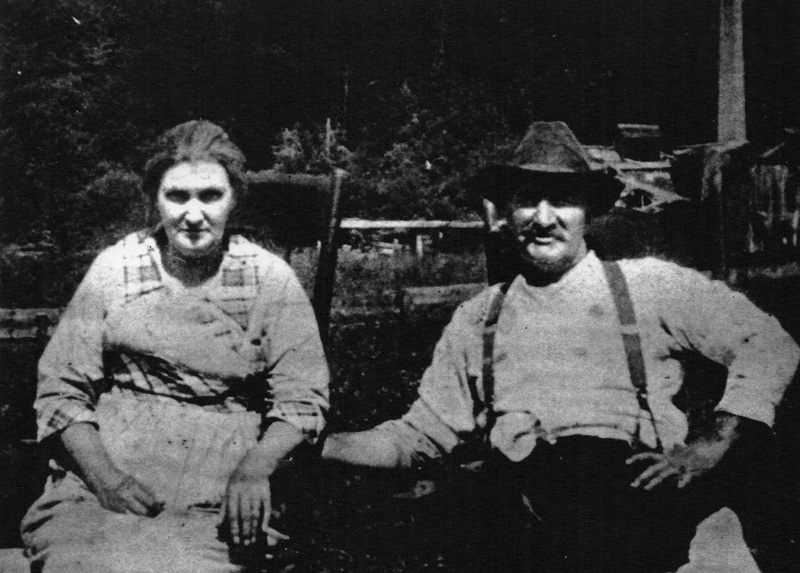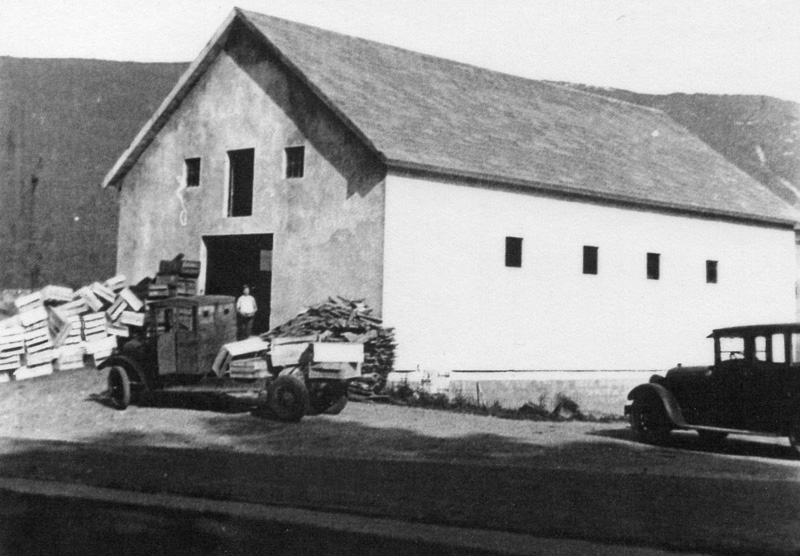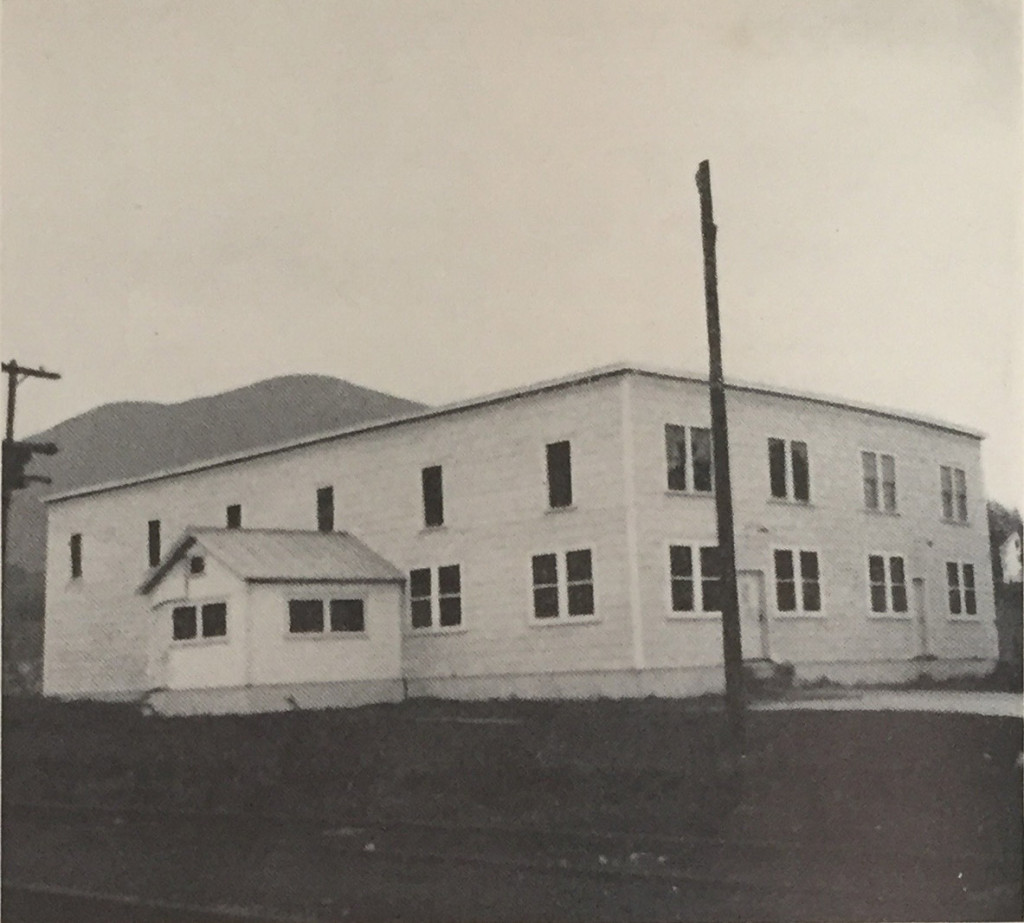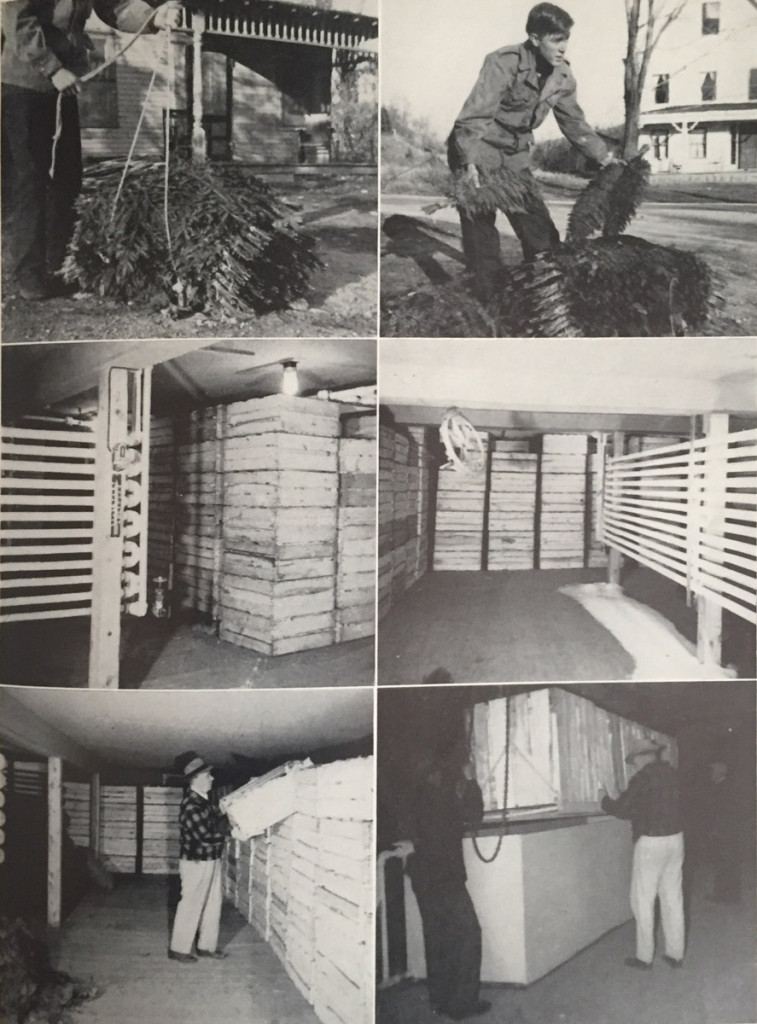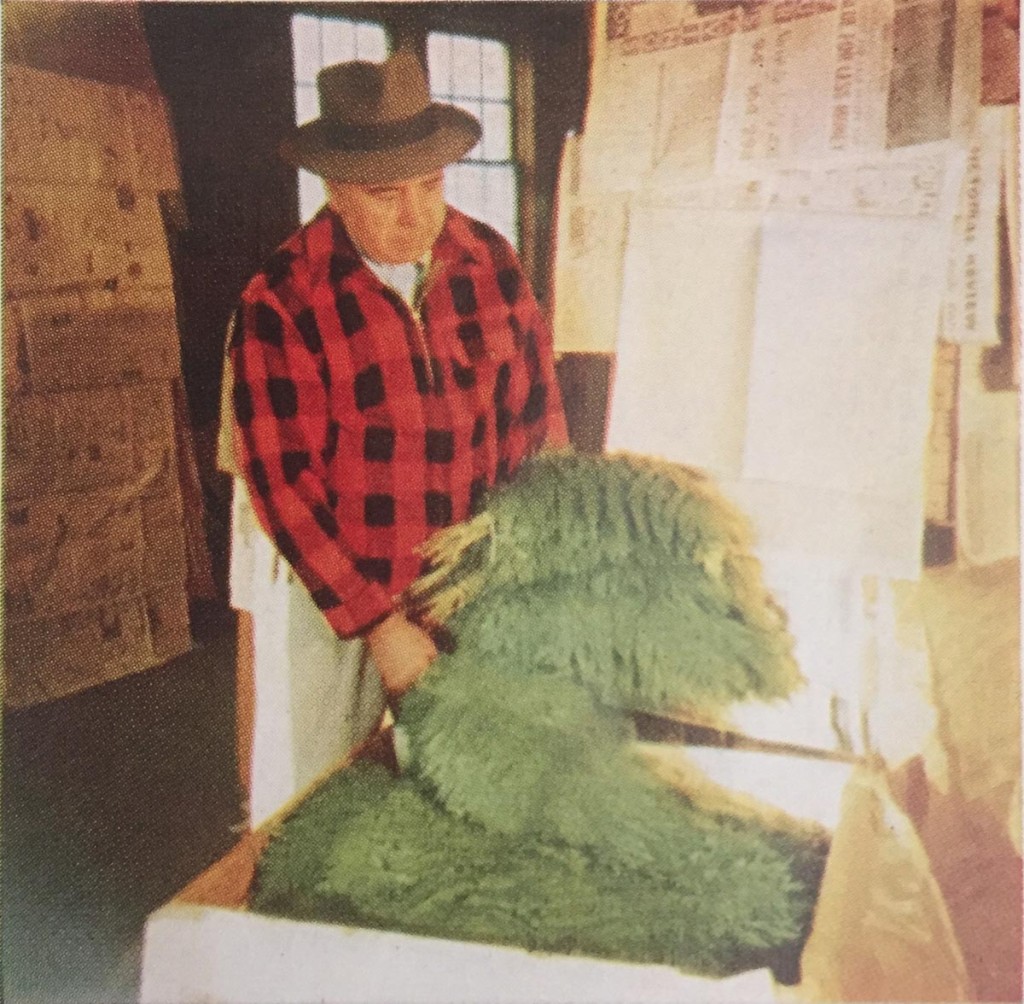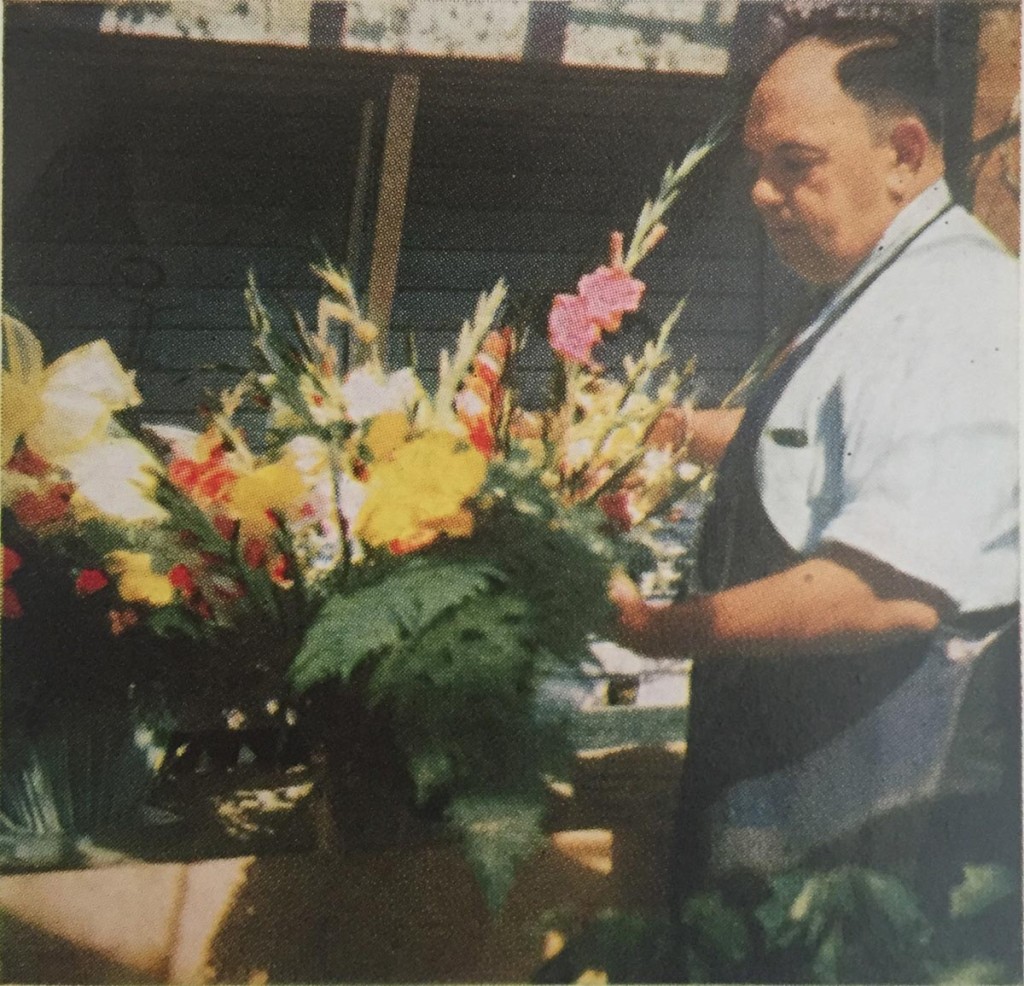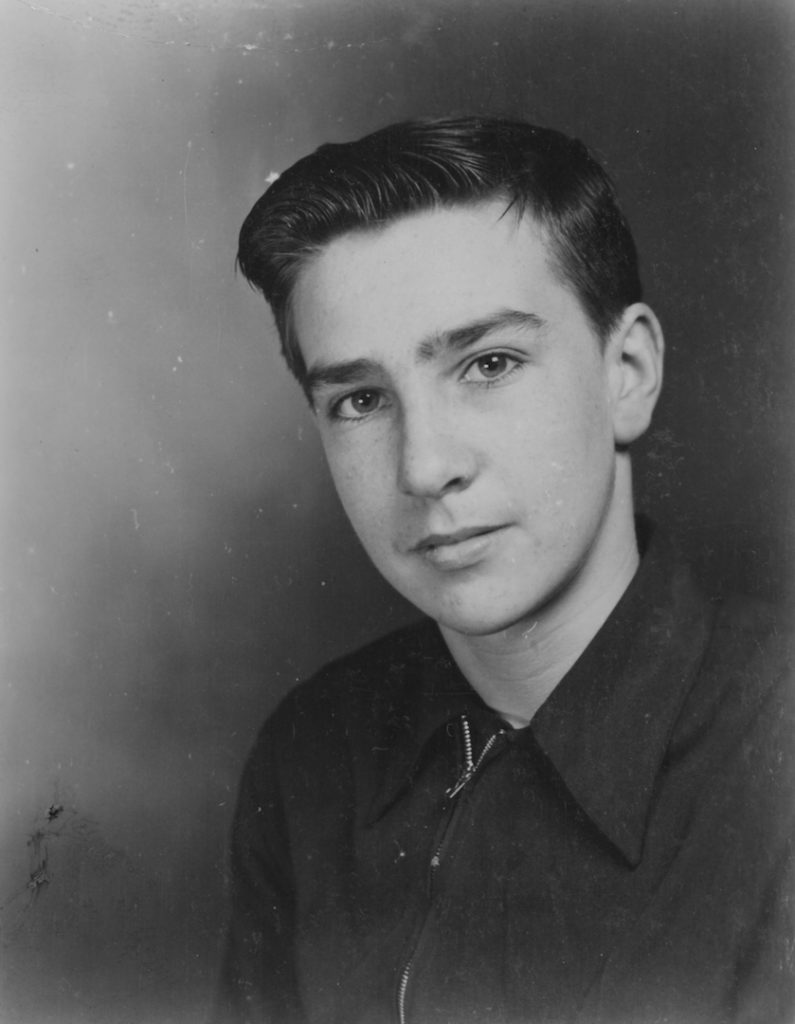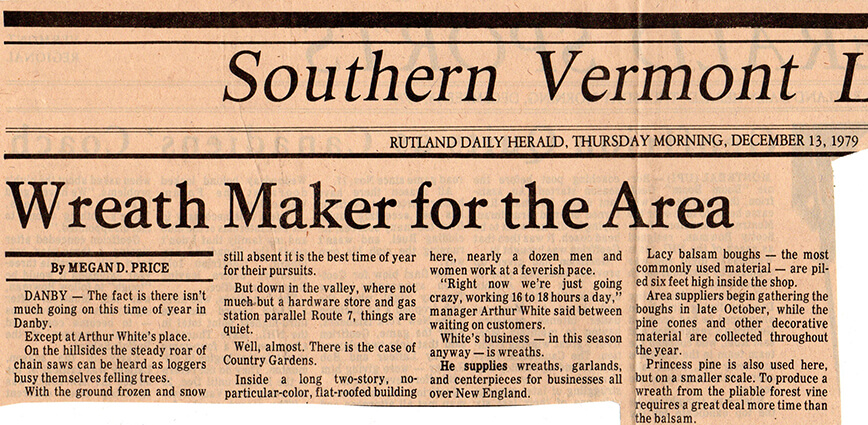
Founded in the early 1900’s by Peter Ackert, the M.L. Ackert Fern Company has become a leading producer for the Nephridium Spinulosum Intermedium, or more commonly the Fancy Fern found in floral arrangements and bouquets across the country. The company has flourished in Vermont, as the Fancy fern loves the moisture and rough country of the Green Mountains, and a healthy crop of it can continue to produce for many years over if picked correctly.
The M.I. Ackert Fern Company operated for many years out of an impressive 115,000 cubic foot plant located by the tracks of the Rutland Railroad in Danby. It was here that the ferns were brought, stored, and packaged for shipment to major cities all over North America.
The Beginning of the Ackert Fern Industry in Danby, VT
Chick Ackert
From the early 1900’s my grandfather, Peter I. Ackert and his wife Sarah started a business to supply Fancy Ferns to florists, hotels, and fish markets all over the United States, and this continued for several generations. They then extended the business to include a massive inventory of pine, spruce, and hemlock cones among others. During the rein of M. L. (Mort) Ackert, they became known as the worlds largest supplier of these items. Mortimer was one of Peter and Sarah’s twelve children.
The business needed millions upon millions of Fancy ferns every year to satisfy the general public’s fascination. These ferns only grew in the wild and couldn’t be raised like vegetables. They only grew in specific areas of the Green Mountains shaded by deep dark hardwood trees. They had to be accessible in massive amounts. Federal lands and the vast land holdings of Central Vermont Electric Company became the prime areas where ferns were harvested around Rutland and Randolph.
This was one of the few businesses that prospered during the Great Depression of the 1930’s and 1940’s. Mort had the presence and ability to convince the powers that ruled this domain to allow the many large, starving families he employed to gather ferns on their land. He also built a large cold storage to warehouse and maintain these very fragile ferns at a constant 33 degrees until late June of the following year. Danby became the central area, then Merle “Zib” Ackert annually set up the Chittenden area, Arthur “Dodd” Ackert did the same for his part of the business in Randolph.
One must remember that fern picking was 1. Hard, 2. Demanding (because of the bugs and the heat of summer) and 3. Piece work, paid by the bunch. So the original work force was the family and the extended family and their friends. Gramp, however, was prepared: he started a crash course of annual on-the-job and one-on-one training. There was a modest investment by the family—twine, and their time, that was it! This Depression era business took off like gangbusters!
Picking areas were cherished and there were a lot of unwritten rules, like don’t never-ever go into someone else’s area! There was plenty of area all over the Green Mountains, so this wasn’t much of a problem. The hard part was to be able to tell a Fancy Fern from Seed Backs, Brakes, Daggers, and water ferns. Most pickers did quite well for the times. People today wouldn’t believe what so many did for so little pay, but back then it was a minor miracle. Get up early, go into your local mountain, apply what you had been taught, work hard, bring your packs of ferns into a fern camp and walk out that day with your earnings in your hand. That was the magic of it all! It’s also difficult for people to grasp just how many, for so many seasons found this a way of life.
Each summer after school was out, Merle “Zib” would set up quarters in the old Chittenden Hotel, a one-time stage stop on the way from Rutland to Pittsfield. This building had a dance hall upstairs and a number of rooms. The season would start off slowly and build up gradually until the end of August when it got really busy as school was about to start and the State Fair was in town.
Fern pickers had to build themselves one or two pack boards, two feet wide, three feet high with shoulder straps and rope to tie down the ferns to be packed out of the woods after picking. 5,000 ferns per pack (200 bunches) was considered a reasonable load. I have carried out 10,000 on one pack, but that’s how I and many others literally ruined our backs. But of course, we all bragged and loved being in the great outdoors, at least on the good days! My dad always went in for 10,000 ferns every day, rain or shine. The best figure, bragged my uncle Robert, “Toots” was 27,000, but Dad said he had several of the girls helping him while he bunched them. My brother Johnny claimed 17,000 and the best I ever did was 14,000.
No fern picker ever got rich, but I never knew one to starve, either. When the season started the demand was not great, so the price always started low, .40 cents per 1000. That’s right, year after year, 25 ferns to the bunch, 40 bunches to the 1000. Fern pickers can’t just grab hands full of ferns and pack them onto a packboard and bring them out and get paid. Oh no! What you did was find a patch, a big patch of ferns in an accessible area, pick ehm, one, two, maybe three at a time, place them face up, one at a time atop each other until you have 25 atop each other, each fern being 15″ tall, not counting the 5″ – 6″ butt (handle). Then rub all the feathery fern parts off of the butt, then grab the very sharp knife you had dangling from string from your belt and cut the ends of the butt even. Then take the end of the fern twine dangling from your pocket and put twine through the end of the butt, make 3 – 5 turns around butt ending by again pulling string through the butt, break off the twine, and “Eureaka!” one bunch, one fortieth of a thousand, one cent at 40 cents per thousand. But don’t worry, by season’s end the price will be up to three cents per bunch, $1.20 per thousand, however, that’s not for bug-eaten or damaged ferns, and the fancy fern is very fragile!
For us Ackerts, that was just the beginning of our second half of the day. After we brought in the ferns, we had to pack them in moss lined 3 1/2 x 3 1/2 x 1′ fern boxes in preparation for trucking to the Danby storage. Often at night, George Stone would ride up with Art White and pick up the ferns. Sometimes John Francis, a son of Dad’s good friend Roy Francis would play his guitar and sing real late. He was good, even at 79!
Photos
Click to view larger.
